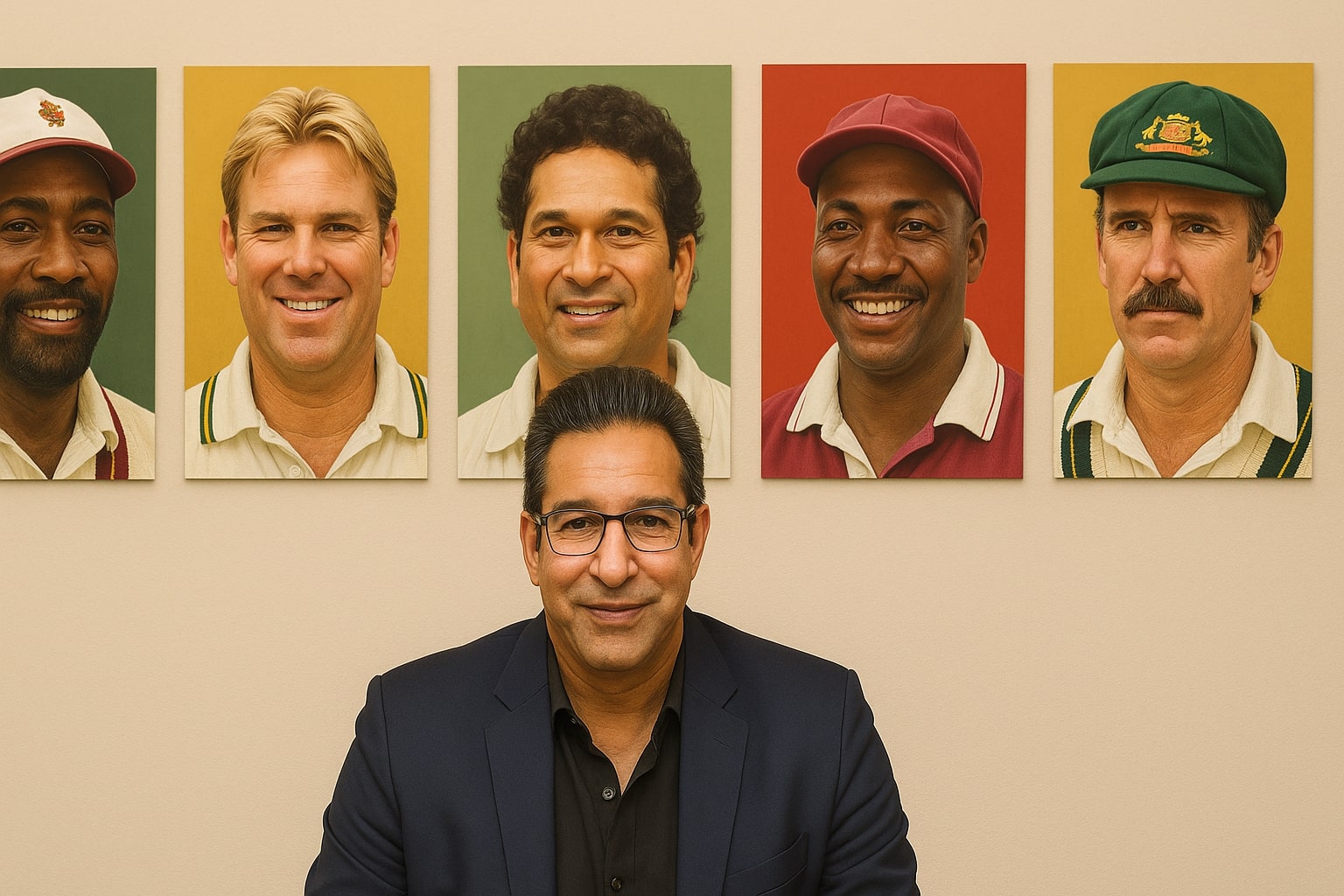In the world of cricket, discussions about the greatest players often ignite passionate debates among fans, analysts, and former cricketers alike. Recently, legendary fast bowler Wasim Akram took to social media to share his insights on the top five cricketers from his era, a time during which he himself was a dominant force in international cricket. Akram, known for his exceptional skills and remarkable impact on the game, offered his unique perspective that provides a nostalgic look into the golden age of cricket. Let us delve deeper into his selections and the significance of each player he highlighted.
The Cricketing Giants of a Bygone Era
While the criteria for greatness can vary from one fan to another, Akram’s choices reflect not only their talent but also their contributions to the game during the late 1980s through the 1990s. This era was particularly rich in cricketing history, as it boasted numerous legendary players who not only excelled individually but also elevated the game on a global scale.
1. Sachin Tendulkar – The Master Blaster
Without a doubt, Sachin Tendulkar occupies a revered spot in cricketing history. Often referred to as the “Little Master,” Tendulkar’s career spanned an unprecedented 24 years, during which he set numerous records that stand as benchmarks in the sport. His impeccable technique, ability to adapt to different formats, and immense mental fortitude made him a nightmare for bowlers worldwide. Akram’s admiration for Tendulkar is palpable; the two players faced off numerous times, and the respect between them is mutual. Tendulkar’s influence extends beyond statistics; he became a symbol of hope and pride for millions, particularly in India.
2. Brian Lara – The Artful Dodger
Next on Akram’s list is the West Indies legend Brian Lara, celebrated for his flamboyant batting style and ability to play long innings. Lara holds the record for the highest individual score in Test cricket — 400 not out, as well as a remarkable 375 runs in a single match. Akram remembers Lara’s elegant stroke play and fearless approach, which brought a unique flair to the game. Lara was not just a scorer of runs but an artist on the field, captivating fans with his exquisite timing and skill. His rivalry with bowlers like Akram added an intriguing subplot to both his career and that of the great fast bowler.
3. Shane Warne – The Spin Wizard
The inclusion of Shane Warne in Akram’s top five is emblematic of the monumental impact that this leg-spin bowling maestro had on the game. Warne revolutionized spin bowling, proving that it could be both a weapon and an art form. With his uncanny ability to spin the ball and deceive batsmen, Warne took over 700 Test wickets, making him one of the highest wicket-takers in history. Akram, who thrived as an opposing bowler, appreciated Warne’s skill and strategic mind on the field. The rivalry between fast bowling and spin bowling during this period created some of cricket’s most memorable encounters, with Akram and Warne often on opposing sides.
4. Jacques Kallis – The Complete Cricketer
Representing South Africa, Jacques Kallis is often hailed as one of the greatest all-rounders in the history of cricket. With over 10,000 runs and 300 wickets in both Tests and One-Day Internationals (ODIs), Kallis embodies the essence of a complete cricketer. Akram acknowledges Kallis’s ability to change the game with both bat and ball, a rare trait that sets only a few players apart. Kallis’s professionalism and commitment to the game made him a role model, and his influence extended beyond the field as well, mentoring younger cricketers.
5. Imran Khan – The Inspirational Leader
Last but certainly not least is Imran Khan, the former Pakistani captain and cricketing icon. Akram’s inclusion of Khan recognizes not only his exceptional skills as an all-rounder but also his significant impact as a captain. Under Khan’s leadership, Pakistan clinched its first Cricket World Cup in 1992, a pivotal moment in the nation’s cricketing history. Akram respects Khan not just for his cricketing prowess, but also for his ability to inspire and unite a team. Khan’s charisma and passion for cricket helped elevate the sport in Pakistan and established a legacy that resonates with fans to this day.
Conclusion: Honoring the Legacy
Wasim Akram’s reflections on the top five cricketers of his era serve as a reminder of the rich history and heritage of the sport. Each player he mentioned not only left a mark through their extraordinary talent but also inspired generations of cricketers and fans alike. The shared experiences, rivalries, and camaraderie among these legends highlight the beauty of cricket as a game that transcends boundaries, cultures, and time.
As the game continues to evolve, it is essential to honor those who laid the foundation for contemporary cricket. Akram’s choices are not just a list of names; they represent an era filled with unforgettable moments, brilliant performances, and a deep-seated love for the game that continues to thrive today. The legacy of these cricketers will remain etched in the annals of cricket history, reminding us of the enduring magic of sport. Read more


Leave a Reply